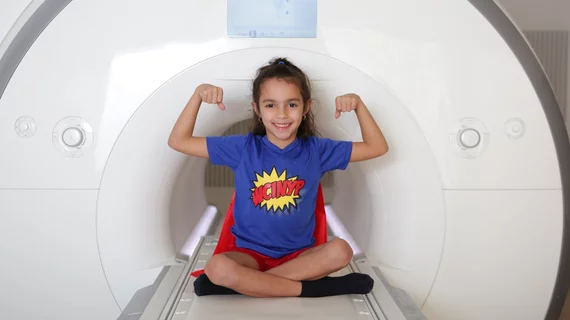Simple animated video helps kids complete their MRI exams without anesthesia
A simple educational video helped more children complete MRI scans without anesthesia, according to a study published Thursday. Experts believe the technique could enhance imaging safety and capacity.
That’s one of the main takeaways from researchers out of Denmark and Norway, who tested the effectiveness of a 30-minute message in which animated characters demonstrated how an MRI scan is completed.
All children who watched the video, including a handful scheduled to receive general anesthesia (GA), completed their exam without needing sedation, authors reported in the Journal of Radiology Nursing.
Given that none of the radiographers required additional special training, the technique may be a relatively simple solution for safer and more effective outpatient imaging.
“When more children are able to complete MRI scans without GA, we expect more scanner capacity to be released, and as a result of that, we expect that the waiting time for both MRI scans with and without GA will be reduced,” Signe Scheffmann Olloni, with Odense University Hospital’s Department of Radiology, and colleagues wrote.
For their prospective investigation, the team had kids between four and nine years old arrive early so they could watch the educational video. As part of their preparation, a radiographer met with the patient to establish a relationship and play the 30-minute video via a tablet.
Children referred for a scan by the oncology department and those who were undergoing cancer treatments were excluded. In total, 52 kids were included over the three-month study period.
All 52 finished their MRI without anesthesia, even the 11 children who were initially scheduled to receive it, the authors noted. Additionally, every parent who responded to a survey about the process rated it as either “good” or “very good,” indicating their child was more confident during the exam.
The authors currently utilize the video as part of daily routine and offered a few additional research-related goals for institutions looking to do the same.
“Future studies may reveal if the effect seen in the study primarily emerges from the use of the application or from the interpersonal contact between radiographer, child, and parents,” they added. “Furthermore, studies specifically addressing image quality should be carried out.”

